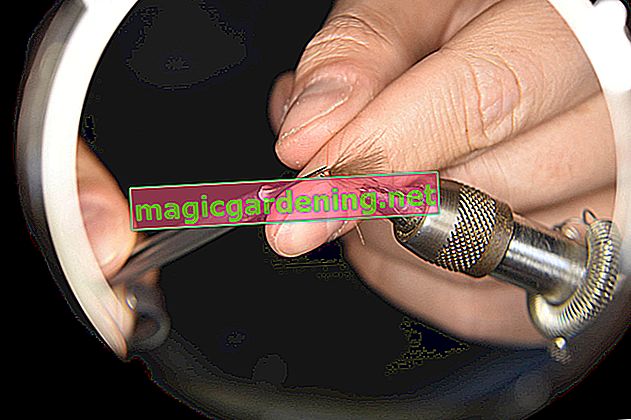
Most common cause of sticky leaves: Pure stress
If resinous droplets form on the foliage, orchids signal a disorder. This is mostly based on stress as a result of excessive temperature fluctuations at the location. Phalaenopsis and Cattleya favor a well-balanced temperature scale that should not fluctuate by more than 5 degrees Celsius. If you create the following framework conditions at the location, the sticky secretion does not occur:
- Temperatures in summer 20 to 28 degrees, in winter 16 to 20 degrees Celsius
- Bright light conditions without direct sunlight at midday in the summer
- High humidity of 60 to 80 percent
also read
- Orchid buds dry up and fall off - this is to be done now
- Are orchids harmful or not in the bedroom?
- Caring for orchids properly for a long flowering period - this is how it works
With a simple minimum-maximum thermometer, you can see exactly whether there are problematic fluctuations of more than 5 degrees Celsius between day and night at the location.
Waterlogging makes orchids sweat
If there is a combination of waterlogging and high humidity, vital transpiration is impeded. In order to maintain the flow of water, orchids in their distress press the moisture through the stomata of the leaves, which can be seen as a sticky secretion. Botanists refer to this process as guttation.
If waterlogging can be diagnosed as the cause of sticky leaves, ideally repot the orchid unless it is in the middle of its flowering period. Otherwise, let the substrate dry well and water more sparingly from now on.
Aphids cause sticky leaves
If location problems and waterlogging can be ruled out as causes, aphids come into focus as triggers. The pests prick the leaves and suck up the sap. They excrete the waste as a sticky secretion. Once you've spotted the tiny lice on the underside of the foliage, do the following:
- Wipe the leaves with a damp, soft cloth
- Make a solution from 1 liter of water, 1 tablespoon of soft soap (€ 17.27 at Amazon *) and 1 teaspoon of alcohol
- Spray the infested orchid at intervals of 2 to 3 days
Isolate the plant as long as aphids cavort on it to prevent further spread.
Consistently wipe sheets
The resinous droplets on orchids mainly contain sugar and other nutrients. Please wipe off the sticky discharge regularly with a soft cloth. If aphids have not already caused them, the pests and other pests are magically attracted by them.
Tips
There's no need to cut off the sticky leaves on orchids. The sticky secretion does not cause disease and is not infectious. In this case too, please remain true to the principle that only completely dead plant parts may be cut on orchids.








